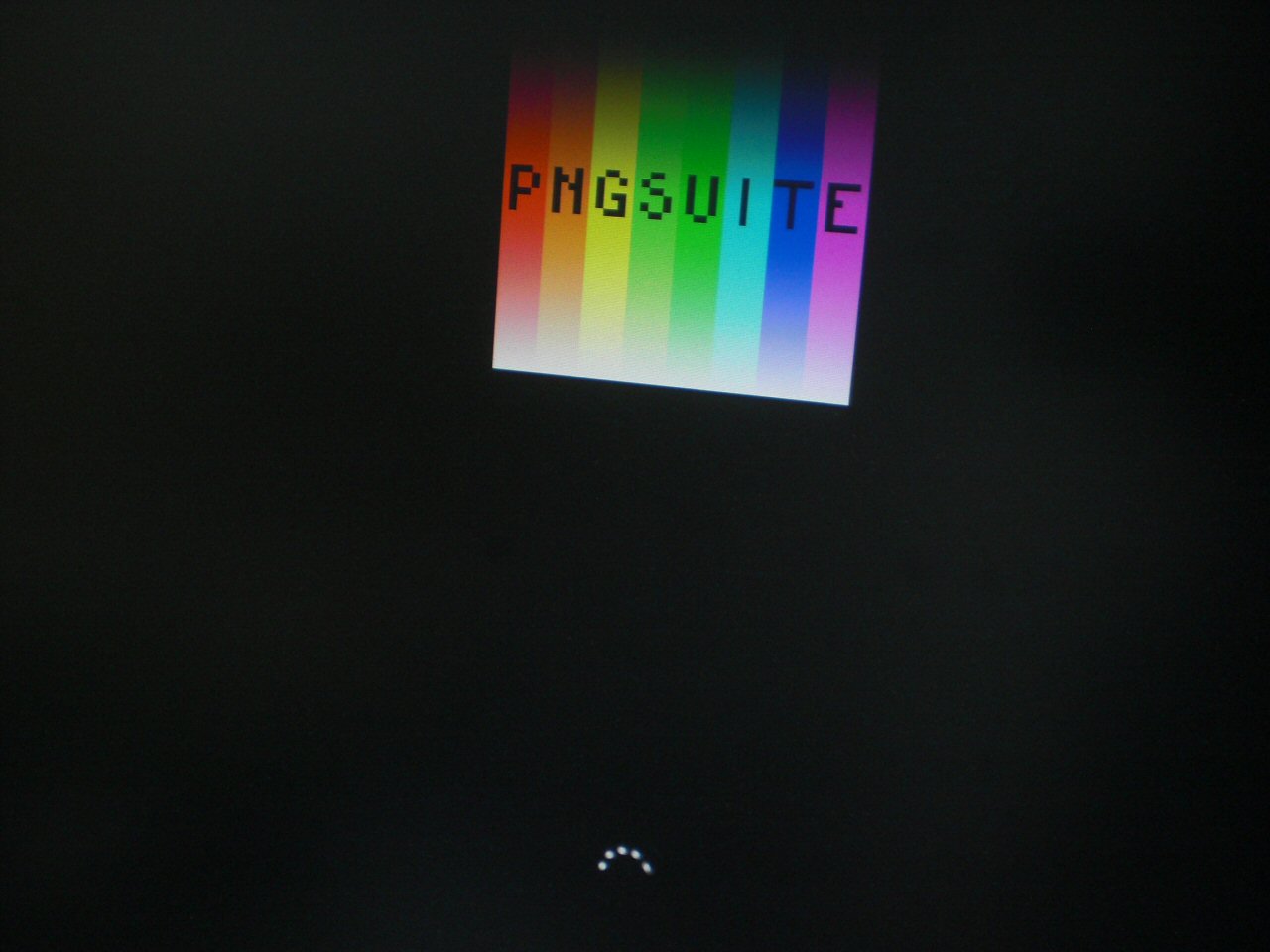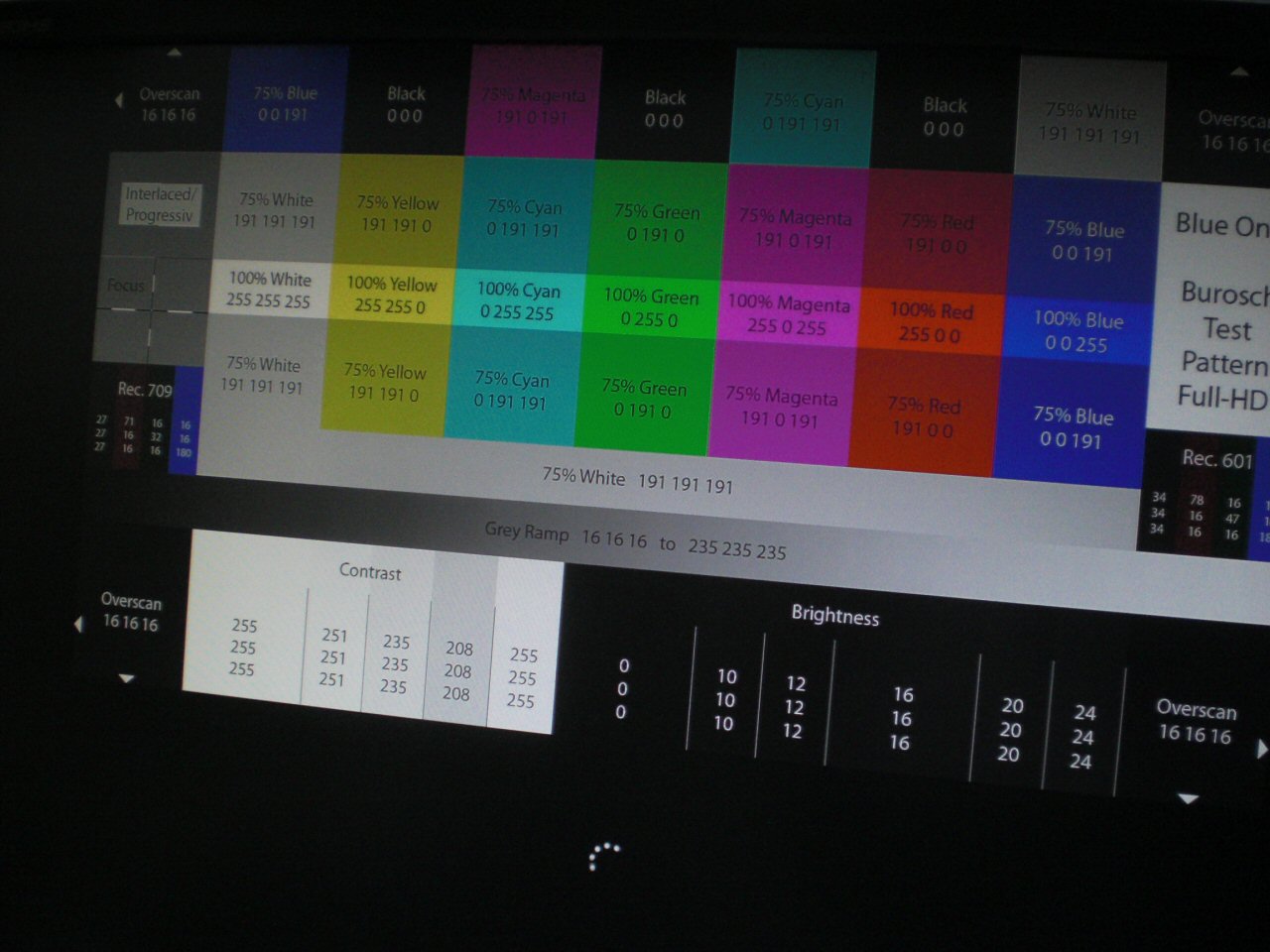| . | . | . | . |
|---|---|---|---|
| 2023/10 | v2.1.0 | Merge master Metabolix Update change log and tag v2.1.0 da9909b #7 | --- |
| 2023/11 | v2.2.0 | Merge master Metabolix Update change log and tag v2.2.0 5856d25 #9 | Works fine |
| 2024/03 | v2.4.0 | Merge master Metabolix Update change log and tag v2.4.0 1a5b1df #10 | Works fine |
- Support PNG format image file
(But not Support Interlaced image) - Support JPEG format image file
(But not Support Progressive image) - Ofcourse also Support BMP format (^_^)
https://github.com/elanthis/upng
These formats supported:
8-bit RGB, RGBA
16-bit RGB, RGBA
1,2,4,8-bit RGB INDEX Color Palette
1,2,4,8-bit Greyscale
8-bit Greyscale w/ 8-bit Alpha

https://code.google.com/archive/p/picojpeg/
https://github.com/richgel999/picojpeg
These formats supported:
SOF0 Baseline format only(not Support Progressive)

https://commons.wikimedia.org/wiki/File:Burosch_Blue-only_Test_pattern_mit_erklaerung.jpg
1,280 × 720 pixels
- Windows_WSL_Debian_1st.txt
- Windows_WSL_Debian_2nd.txt
- Windows_WSL_Debian_3rd.txt
- Install.txt
Caution:
Build only the 64-bit version .
Because I don't know how to write a Makefile script .
Reference:
UEFIアプリケーション開発環境を Windowsの WSL環境で構築して QEMU環境で動作確認する方法
http://www.neko.ne.jp/~freewing/software/uefi_bios_hack/
Converting Progressive JPEG Image file to Baseline JPEG Image file
https://github.com/FREEWING-JP/CheckAndConvertJpegFile
Super UEFIinSecureBoot Disk
https://github.com/ValdikSS/Super-UEFIinSecureBoot-Disk
rename HackBGRT_MULTI_x86_64.efi to grubx64_real.efi
HackBGRT is intended as a boot logo changer for UEFI-based Windows systems.
When booting on a UEFI-based computer, Windows may show a vendor-defined logo which is stored on the UEFI firmware in a section called Boot Graphics Resource Table (BGRT). It's usually very difficult to change the image permanently, but a custom UEFI application may be used to overwrite it during the boot. HackBGRT does exactly that.
Note: The original logo is often visible for a moment before HackBGRT is started. This is expected, please do not report this "bug". This can't be changed without modifying computer firmware, which this project will not do.
Important: If you mess up the installation, your system may become unbootable! Create a rescue disk before use. This software comes with no warranty. Use at your own risk.
- Make sure that your computer is booting with UEFI.
- Make sure that you have read the Secure Boot instructions.
- Make sure that BitLocker is disabled, or find your recovery key.
HackBGRT is not approved by Microsoft. Instead, HackBGRT comes with the shim boot loader, which allows to manually select HackBGRT as a trusted program. After installing HackBGRT and rebooting your computer, you have to follow the instructions in shim.md to achieve this. These steps cannot be automated, that's the whole point of Secure Boot. Although HackBGRT is self-signed with a certificate, it's not advisable to enroll foreign certificates directly into your firmware.
The shim boot loader is maintained by Red Hat, Inc, and the included signed copy of shim is extracted from Debian GNU/Linux – many thanks to the maintainers! For copyright information, see shim-signed/COPYRIGHT.
- Get the latest release from the Releases page.
- Start
setup.exeand follow the instructions.- The installer will launch Paint for editing the image.
- If Windows later restores the original boot loader, just reinstall.
- If you wish to change the image or other configuration, just reinstall.
- For advanced settings, edit
config.txtbefore installing. No extra support provided! - After installing, read the instructions in shim.md and reboot your computer.
- Edit the
config.txtandsplash.bmp(or any other images) to your needs. - Run
setup.exe batch COMMANDSas administrator, with some of the following commands:install– copy the files but don't enable.enable-entry– create a new EFI boot entry.disable-entry– disable the EFI boot entry.enable-bcdedit– usebcdeditto create a new EFI boot entry.disable-bootmgr– usebcdeditto disable the EFI boot entry.enable-overwrite– overwrite the MS boot loader.disable-overwrite– restore the MS boot loader.skip-shim– skip shim when installing.allow-secure-boot– ignore Secure Boot in subsequent commands.allow-bitlocker– ignore BitLocker in subsequent commands.allow-bad-loader– ignore bad boot loader configuration in subsequent commands.disable– run all relevantdisable-*commands.uninstall– disable and remove completely.show-boot-log– show the debug log collected during boot (iflog=1is set inconfig.txt).
- For example, run
setup.exe batch install allow-secure-boot enable-overwriteto copy files and overwrite the MS boot loader regardless of Secure Boot status.
If you only need HackBGRT for Windows:
- Run
setup.exe, install files without enabling. - Configure your boot loader to start
\EFI\HackBGRT\loader.efi.
If you need it for other systems as well:
- Configure HackBGRT to start your boot loader (such as systemd-boot):
boot=\EFI\systemd\systemd-bootx64.efi. - Run
setup.exe, install as a new EFI boot entry.
To install purely on Linux, you can install with setup.exe dry-run and then manually copy files from dry-run/EFI to your [EFI System Partition]/EFI. For further instructions, consult the documentation of your own Linux system.
The configuration options are described in config.txt, which the installer copies into [EFI System Partition]\EFI\HackBGRT\config.txt.
If you only need one image, just edit splash.bmp to your needs.
Advanced users may edit the config.txt to define multiple images, in which case one is picked at random. The installer copies and converts the images. For example, to use a file named my.jpg, copy it in the installer folder (same folder as setup.exe) and set the image path in config.txt to path=my.jpg before running the installer.
If you copy an image file to ESP manually, note that the image must be a 24-bit BMP file with a 54-byte header. That's a TrueColor BMP3 in Imagemagick, or 24-bit BMP/DIB in Microsoft Paint.
If something breaks and you can't boot to Windows, you need to use the Windows installation disk (or recovery disk) to fix boot issues.
- Compiler: Clang
- Compiler flags: see Makefile
- Libraries: gnu-efi